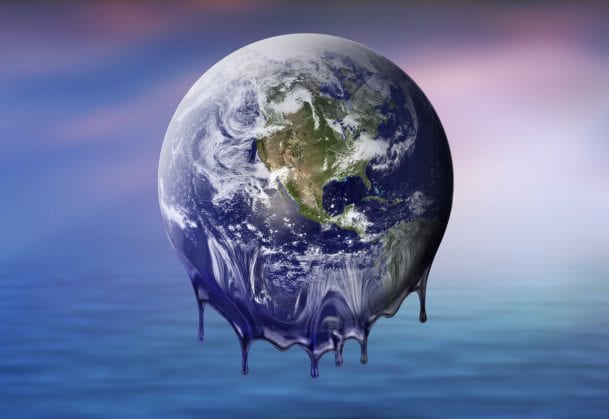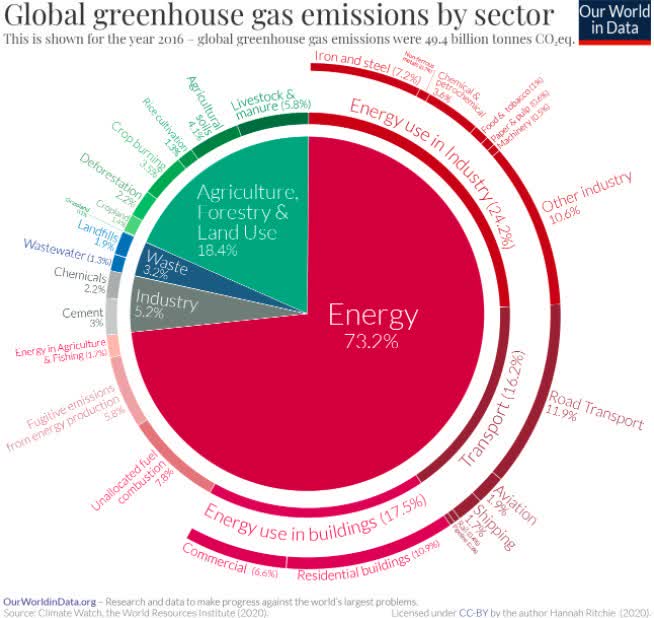Manmade global warming is a scientific fact. The temperature of Earth’s atmosphere has increased about 2% since the Industrial Revolution began in the latter part of the 19th century. Scientists tells us that humans are almost the sole cause of this increase in Earth’s temperature. Yet global warming has become a divisive factor in American politics of late. That is, many millions of American deny that humans are causing this global warming. But I believe this denial of science will not last. Eventually, just about everyone in the world will realized that humans have been causing global warming.
Most people know from mere observation that humans have been polluting the atmosphere with greenhouse gases just by seeing and smelling the dirty air in some of the world’s largest cities, such as in China and India. It has had a detrimental effect on peoples’ health, especially those who suffer breathing difficulties such as asthma. One estimate is that air pollution causes early death for 7 million people annually.
Now, we are seeing the destructive effects of global warming as it changes weather patterns. There are more and greater glacier meltings, flooding, hurricanes, drought, forrest fires, and heat warnings. All of this gravely affects agriculture and alters animal habitats. In most parts of the world, spring now comes sooner and winter arrives later.
Most of manmade global warming is caused by the burning of fossil fuels. To counter this, nations are setting targets and passing laws to eventually attain a carbon neutral world. It will be a mighty, herculean task. For example, China is the world’s biggest air polluter of greenhouse gases. Yet, China’s President Xi Jinping announced late last year that China has set a goal of no greenhouse gases by 2060. The European Union likewise had already set a target of carbon neutrality by 2050.
Industry is the biggest cause of manmade global warming.
Transportation is a big cause of global warming due to the gasoline combustion engine. But nations are passing laws and setting targets to reduce these particular emissions. Emission-trading systems are being inaugurated, also called “cap and trade,” in which industries will be held accountable for exceeding their allotments to pollute the air. If corporations exceed their quota, they will be highly penalized financially. But they will have the option of reducing or negating such penalties by purchasing carbon credits from their competitors who emit less than their quotas.
Tesla is an example of a corporation that is overcoming global warming with its battery-operated, electric vehicles (EVs). In doing so, Tesla has recently become a disruptor of the auto industry. I have been an investor in Tesla for years. Last year I began saying, “Tesla will be the Apple of the next decade.” This year alone, Tesla’s stock has already increased over 500%. But it hasn’t been easy or guaranteed. Co-founder and CEO Elon Musk admitted recently that only 18 months ago, Tesla was “one month away from bankruptcy.” Musk had this vision to eradicate polluting transportation. But Tesla now consists of two parts: Tesla Automotive and Tesla Energy. Thus, Tesla is also reducing global warming by means of solar power, improving batteries, etc.
Tesla will be added to the S&P 500 on the stock market at the end of this year, which will be a big feather in its cap, because it finally has achieved the requirement of four successive quarters of profitability. But it could only do that due to its emissions credits it sold to competitor auto manufacturers who were exceeding their emissions quotas. For example, in each of the last two business quarters, Tesla sold nearly half a billion dollars of such credits to competitors, mostly to DaimlerChrysler.
Investors have been making a lot of money by investing in Tesla or just renewable fuels in general, such as solar or wind power. In contrast, the oil companies that used to be the great titans of industry are going down. Exxon Mobil used to be the largest corporation in the world by market capitalization. But now it has been surpassed by several IT companies such as Apple, Microsoft, and Amazon. Some of these former oil titans now acknowledge that they are some of the world’s largest air polluters and therefore are investing in renewable fuels. Thus, they see the future coming, a future of carbon neutrality.
In addition, investors are increasingly requiring funds in which they invest to be ESG, referring to Environmental, Social, and Corporate Governance. About environment, they are requiring that funds only purchase stock in corporations that advocate sustainability of the environment, thus no oil stocks.
Also regarding transportation, nations are setting targets and passing laws in which they will be restricting the manufacturing and selling of combustion engine vehicles. Thus, in some nations there will be no more making and selling of such vehicles by the year 2040, or 2035, or 2030, or even 2025. And not long after some of these nations have so announced these target dates, they change them to a nearer date. The U.S. has not been doing, but the state of California has. Thus, in the future, there will come a time when gasoline vehicles are a thing of the past. For now, EVs are the future.
The U.S. is the second largest emitter of greenhouse gases in the world, second only to China. We produce 25% of all greenhouse gases in the world. Yet the U.S. has only 4.5% of the world’s population. Thus, the U.S. has been lagging behind the rest of the advanced nations in the world in reducing its burning of fossil fuels.
But no longer; President-election Joe Biden plans for the federal government to spend $2 trillion in reducing America’s emission of greenhouse gases during his four-year term. That, of course, is the exact opposite of what the Trump administration did. Trump denied global warming, said he would “bring back coal,” and got laws passed that were non-environmental benefits to the coal and oil industries, thus increasing U.S. greenhouse gases despite the fact that the COVID pandemic reduced travel.
Below is a chart by Our World in Data that shows the sources of global warming.















